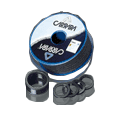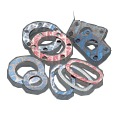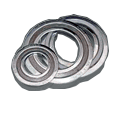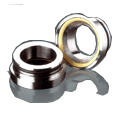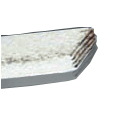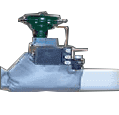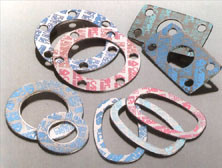You wouldn’t use a candle when you really needed a blowtorch.
It’s just not going to get the job done — and neither is picking the wrong high-pressure gasket for your system.
High-pressure gaskets aren’t something to mess around with. In the wrong conditions, they’ll leak, crack or even fail altogether, leaving your equipment and your team in a tight spot.
That’s why at Steamline Engineering – Australia’s leading supplier of high-quality gaskets – we’re here to walk you through how to choose the right high-pressure gasket for your application.
Picking the right base material for high-pressure gaskets
The first thing to consider when selecting a high-pressure gasket is what it’s made from. Different materials react differently under pressure, temperature and exposure to chemicals. Here’s a quick look at common options.
Metallic
Spiral wound and metal jacketed gaskets offer exceptional strength. They’re often chosen for high-temperature, high-pressure applications where standard rubber just won’t cut it.
Graphite
If you need a balance between heat resistance and flexibility, graphite gaskets are the go-to. They’re a favourite in refineries and power plants.
PTFE (Teflon)
PTFE gaskets are chemically resistant and flexible, making them just the thing for aggressive media.
Rubber
In high-pressure environments, rubber gaskets have limits – but specialised blends like Nitrile or EPDM still have their place in less extreme scenarios.
Each material has pros and cons, so it’s not just about picking the strongest – it’s about picking what’s most compatible with your process.
No shortcuts allowed with pressure ratings
Your gasket has got to stand up to serious forces. That’s why checking pressure ratings isn’t optional.
- Maximum service pressure: Each gasket material has a defined maximum service pressure. Exceeding this can lead to leaks or even a catastrophic failure.
- Australian Standards compliance: At Steamline, we ensure that all gaskets meet relevant Australian Standards, so you can be confident in their performance and safety.
Don’t forget, pressure ratings also depend on temperature and the flange design. A gasket that’s perfect at room temperature might not cut it when things heat up.
Watch for surprises with fluid compatibility
It’s easy to forget that gaskets are constantly exposed to the very fluids they’re sealing in. And if your gasket can’t handle what’s flowing through your pipes, it won’t be long before you’re dealing with leaks.
- Chemical resistance: High-pressure gaskets must resist corrosion, swelling or breakdown caused by the process fluid. For example, graphite gaskets can handle a wide range of chemicals, while PTFE is virtually impervious to most aggressive media.
- Temperature extremes: Some fluids can become more aggressive at higher temperatures, so be sure your chosen gasket can handle the full range of operating conditions.
At Steamline, we’ve seen it all – from water to harsh chemicals – and we’ll make sure your gasket choice is up to the task.
Installation practices for your gasket’s first day on the job
Even the perfect gasket can fail if it’s not installed correctly. So, before you torque those bolts, remember to do the following.
Clean and inspect
Both the flange and gasket surface should be free of debris and damage. A tiny scratch can be the start of a big leak.
Correct compression
Too tight, and you risk crushing the gasket. Too loose, and you’re inviting a blowout. Follow manufacturer guidelines for torque settings.
Re-check after heat-up
High-pressure systems often expand when hot. A quick re-tighten after reaching operating temperature can help avoid leaks.
If you’re unsure about best practices, Steamline’s team can walk you through it – because we know that proper installation is as important as the gasket itself.
Planning for the long haul
High-pressure gaskets are designed to last, but nothing lasts forever. Planning ahead for replacements and maintenance can save you headaches down the line.
- Regular inspections: Keep an eye out for signs of wear, such as bulges or material degradation.
- Proper storage: Gaskets kept in a clean, dry environment will stay in top condition longer. Moisture and sunlight can weaken gasket materials over time.
- Ask the experts: If you’re not sure how often to replace a high-pressure gasket, or whether a change in your process might affect its lifespan, we’re here to help.
Steamline Engineering has you covered when it comes to gaskets that work as hard as you do. We supply quality gaskets that meet Australian Standards, from metallic and graphite to PTFE and rubber blends. Whether you’re after a spiral wound for a power station or a reliable seal for your mining operation, we’ve got the gasket – and the know-how – to keep your system safe and leak-free. Reach out today and find the perfect gasket for your project.



